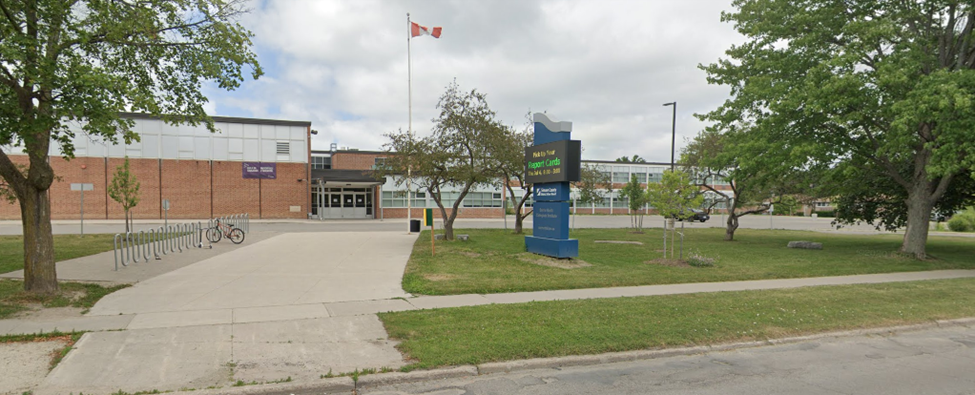Our services
Specialized, industry-leading expertise

Electrical Engineering
At Lonergan Engineering, we specialize in electrical engineering and design for a wide range of buildings, from hospitals and schools to office spaces and industrial facilities. We also offer building feasibility assessments and due diligence reporting, giving you the insights you need to make smart decisions from the start.
Whether it’s new construction, renovations, tenant fit-ups, green building design or energy-efficient retrofits, we approach each project with a solution tailored to its unique needs and the discipline to account for evolving energy codes, emerging technologies, and complex electrical systems.
We’re deeply motivated by our client’s success and are known for practical solutions that account for regulatory compliance, budget efficiency and the needs of our trade partners.
Electrical Engineering services we provide
Electrical Systems Design
- Power systems, power distribution (low and medium voltage)
- Lighting and lighting control (interior/exterior/emergency)
- Low voltage systems infrastructure
- Emergency power systems
- Fire alarm and life safety systems
- Security systems (CCTV, access control)
- Communication/data systems
- Emergency backup power (generators, UPS)
- Building assessments
- Peer reviews
Sustainable Building Design
- EV charging infrastructure
- Renewable energy integration (e.g., solar)
- Green building certification (e.g., LEED)
- Net zero carbon design and upgrades
- Climate change adaptability studies
- Deep retrofit studies
Load Calculations and Lighting Modelling
- Determine power requirements
- Optimize energy efficiency
- Design for future scalability
Code Compliance and Permitting
- Various codes and standards (ULC Standards, CSA Standards, etc.)
- Building codes and green building standards
- Preparation of permit drawings and specifications documentation
Coordination with Other Trades
- Local utility coordination
- Integration with HVAC, plumbing, structural, and architectural plans
- Low voltage systems
- Audio, video, theatrical
- Client vendors, architects, mechanical
Construction Support
- Constructability drawings
- Electrical drawings and construction documents
- Tender/bid support
- Contractor RFIs and shop drawing submittal reviews
- Value engineering
- Compliance review
Inspection and Compliance Review
- Site inspections and general review
- Witness testing of systems
- As-built drawings and system documentation
- Operation and maintenance manuals
- Compliance review

Integrated Systems Testing
Integrated Systems Testing (IST) is a critical step for compliance of fire protection and life safety systems (FLS) systems to ensure they work together properly and as intended in real-world scenarios. It’s mandated by the various building codes and enforced by local authorities having jurisdiction (AHJ), such as municipal fire prevention officers and building inspectors.
IST is typically enforced at the final stages of construction before occupancy permits are granted for any building — and especially complex ones like high-rises, public spaces, or large commercial facilities.
With deep expertise and hundreds of completed tests, Lonergan Engineering is a ULC Listed firm along with a team that is recognized as industry leaders, trusted partners and experts in Integrated Systems Testing. As an independent Integrated Testing Coordinator (ITC), we follow ULC-S1001 Standard to plan, document, and oversee Integrated Systems Testing, ensuring compliance with all regulatory requirements.
There are multiple steps in Integrated Systems Testing
We apply a disciplined process to testing projects




Learn more about Integrated Systems Testing
Expand all
Is integrated systems testing mandatory?
Yes, integrated systems testing is typically required at the final stages of construction before occupancy permits are granted—especially for complex buildings like high-rises, public spaces, or large commercial facilities.
What are some common terms I should know?
Acceptance Testing – “The evaluation of a fire protection and life safety system to ensure that the system is installed in accordance with its design criteria and the relevant Standards associated with its installation.”
Integrated Testing Plan – “A Written project specific document, prepared by the integrated testing coordinator, outlining the required tests and necessary functional results to conduct integrated fire protection and life safety testing.“
Integrated Testing Report – “A written project specific document, prepared by the integrated testing coordinator, documenting the implementation of the integrated testing plan.”
When did Integrated System Testing become a requirement?
• National
National Building Code: Under the National Building Code of Canada, the requirement was introduced in 2015.
National Fire Code: Furthermore, retroactive testing came into effect under the National Fire Code of Canada in 2018.
• Ontario
Ontario Building Code: Ontario first introduced “commissioning of FLS Systems” in the 2012 OBC. However, the ULC-S1001 Integrated Systems Testing did not become the mandatory Standard until January 1st, 2020.
How is integrated systems testing regulated?
CAN/ULC-S1001 Standards – “Integrated Systems Testing of Fire Protection and Life Safety Systems” – is now the Canadian standard for IST.
Depending on the project, there other national or provincial building codes and guidelines may apply. Our experts at Lonergan Engineering will guide you through the appropriate requirements.
Lonergan Engineering has achieved ULC Listing as an Integrated Testing Service Provider, following a rigorous evaluation of our knowledge, Integrated Testing Plans, and onsite testing practices. Only ULC-listed providers can issue ULC Certificates for systems successfully tested and documented in accordance with CAN/ULC-S1001, and with an active service contract in place.
Who can perform integrated systems testing?
In accordance with ULC-S1001, the Integrated Testing Coordinator (ITC) shall be knowledgeable and experienced in the following aspects:
• Design, installation, operation of fire protection and life safety systems
• Fire protection and life safety functions of buildings
• Codes and standards that regulate the above
• How said system are designed to operate under normal and emergency conditions
• Methods for validating the function and integrated said systems
• It’s important to note that, as per UL Certification Bulletin 2020-08, the ITC can NOT be the same company that performs the fire alarm verification on the building
Lonergan Engineering has deep expertise and certified personnel that have managed hundreds of integrated systems tests.
What role does an Integrated Testing Coordinator play?
The role of the Integrated Testing Coordinator (ITC) is a multi step approach to ensuring the interconnections are installed and operating as per their design criteria.
Planning – The ITC shall review all integrations of fire protection and life safety systems, prepared by the design professionals. The ITC will use this documentation to prepare a project specific written Integrated Testing Plan (ITP), which includes function statements, integration matrix, testing procedures and testing forms. The ITP will become a live document turned over to the building owner for future use. Design documentation may include: sequence of operations, cause and effect matrix, operating instructions, interconnection details, etc.
Implementation – Once A) the design professionals have accepted the ITP, B) the Authority Having Jurisdiction (AHJ) has reviewed ITP, C) the installation certificates, verifications and necessary inspections (VI, ESA, Air Balancing, TSSA etc.) are prepared, and D) design professionals acceptance tests are satisfied and complete, the implementation process may commence. The ITC will coordinate the participants to attend and function-test the respective fire protection and life safety systems. All respective parties will witness and initial each result as an integrated test. The test results will be prepared into a Integrated Test Report (ITR) and upon successful completion the ITR shall be turned over to the Building Owner and AHJ.
Can the fire alarm company do the Integrated Testing?
No. The ULC-S1001 Standard outlines the required experience level for an ITC and all participants. You should ensure the parties hired to perform integrated systems testing are suitably certified and experienced.
For ex., the company and the individual representative must have knowledge and experience with the various systems being tested (fire alarm, fire pump, sprinkler, generator, generator life safety transfer, fire cisterns, combination smoke dampers, kitchen suppression, fire door closures, etc.) for the design, installation, acceptance testing and the various codes (CSA-B44, CSA-282, ULC-S500s, CSA-22.2, NFPA 20, NFPA 25, NFPA, 13, NFPA 86, etc.).
What does an integrated systems test include?
Depending on the building, IST includes integration testing of:
• Fire alarm system
• Fire sprinkler and suppression systems
• Smoke control systems
• HVAC (for shutdown, damper actuation, smoke evacuation)
• Emergency power (ex. generators)
• Fire-rated doors and magnetic door holds
• Elevators (fire recall and shutdown)
• Emergency lighting and exit signs
• Firefighter’s communication systems
• Building automation systems
When should we engage an Integrated Testing Coordinator?
As early as you can. More and more municipalities are asking for the Integrated Test Plan to be provided at the time of Building Permit. As such, we recommend starting the process at the 80% design stage. This allows the ITC to ask the right questions and seek engineering details that will aid in the successful certifications process of an Integrated System Testing. Below is a list of municipalities that require Integrated Systems Testing at time of Permit:
• Markham
• Brampton
• Regina
• Burlington
• Mississauga
• Halton Hills
• Collingwood
• Kingston
• Ottawa
• Saskatoon
• Prince Albert
• Vancouver
• London
• Orillia
Is commissioning the same as Integrated Systems Testing?
• No, they are not the same. Commissioning is validating the performance of the individual systems ensuring they meet the specifications and design. For example: commissioning of a smoke aspiration system is to validate the aspiration system response time and sensitives are meet.
• Commissioning is validating the performance of the individual systems, ensuring they meet the specifications and design. For example: commissioning of a smoke aspiration system is to validate the aspiration system response time and sensitives levels meet the design criteria.
• Integrated System Testing validates that the various life safety systems are connected (or integrated) in accordance with the design and standards. For example: A rooftop unit designed to shut-down is electrically connected using correct terminations and that the electrical characteristics are suitable for the connected fire alarm relay.
If we replace our existing panel, do we need Integrated System Testing?
• Yes, 99% of the time. The fire protection and life safety systems have been modified, altered and possibly re-programmed. In accordance with CAN/ULC-S1001 modifications to fire protection and life safety systems that are integrated, requires testing.
• Further, the question should be asked, “do we also require a building permit?” And again, the answer is yes. The building code outlines modifications, alterations or new Building System (a fire alarm system) shall follow all other Parts (ie the work shall comply with today’s building code). In the event of a repair, the performance level shall not affect the existing performance level (ie like-for-like, model number for model number).
We have a fire alarm verification report, why do we need Integrated System Testing?
• To ensure systems work not just independently, but together as designed under normal and emergency conditions.
• In the verification report, turn to section “C5.12 Ancillary Device Circuit Test”. The footnote reads: “NOTE: The tests reported on this Form do not include the actual operational test of ancillary devices.”
Do we really need Integrated Systems Testing if we are only adding one door hold-open device?
Yes. The test will be straight forward, but is still a requirement.
Who should pay for Integrated Systems Testing?
Ultimately the owner is responsible for the cost of their construction project. However, the project is typically bound by contract terms and conditions, that is the contract documents will dictate who is directly responsible for carrying the respective cost. At the end of the day, the project cost is paid out by the owner. Know your contract before bidding a project. As Integrated Systems Testing is tied to achieving occupancy, don’t get stuck holding the bag.


























